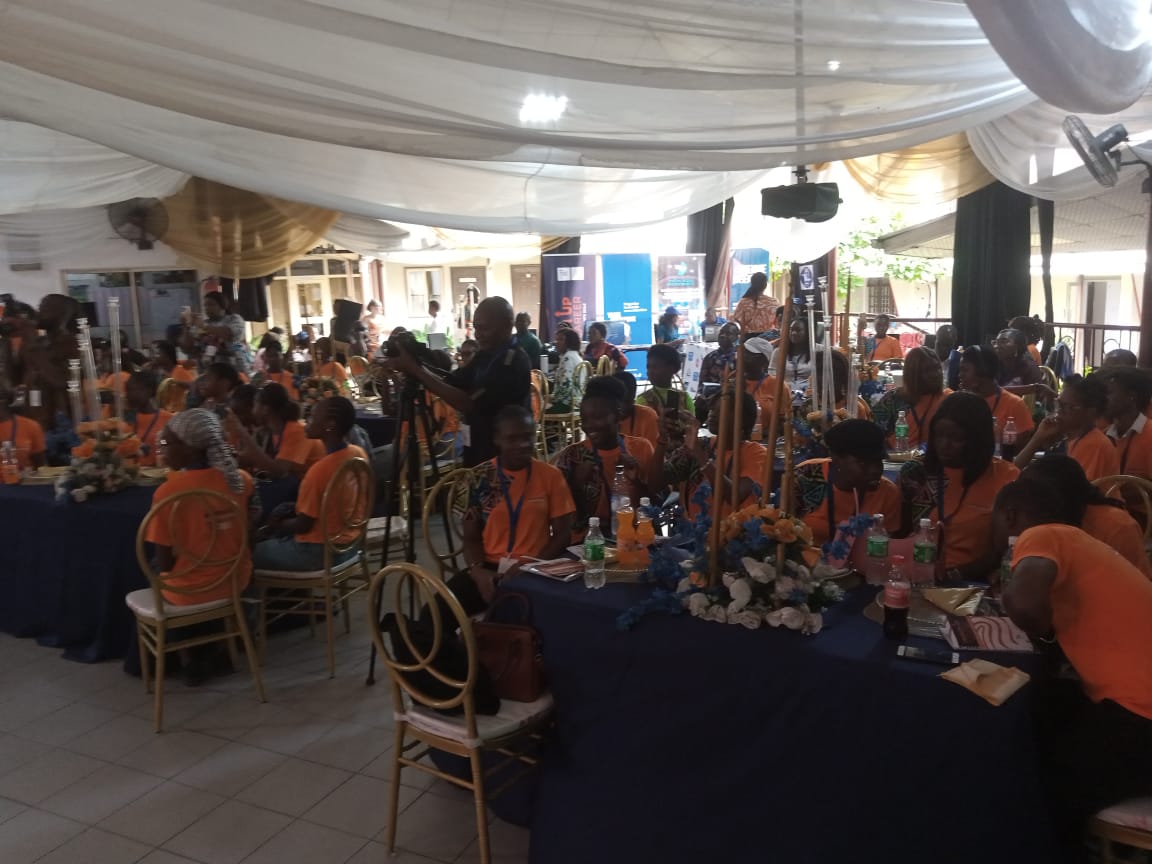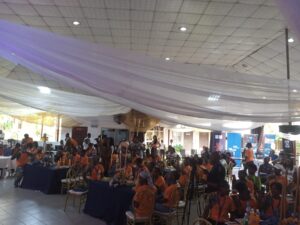Entertainment
Nollywood: Cradle Of African Movies
The Cinema of Nigeria,
often referred to as Nolloywood consists of films produced in Nigeria: Its history dates back to as early as the late 19th century and into the colonial era in early 1900s. The history and development of the Nigerian motion picture industry is sometimes generally classified in four main eras: the colonial era, Golden Age, Video film era and the emerging New Nigerian Cinema.
Film as a medium first arrived Nigeria in the late 19th Century, in the form of peephole viewing of motion picture devices. These were soon replaced in early 20th century with improved motion picture exhibition devices, with the first set of films screened at the Glover Memorial Hall in Lagos from 12 to 22 August 1903. The earliest feature film made in Nigeria is the 1926’s “palaver” produced by Geoffrey Barkas; the film was also the first film ever to feature Nigerian actors in a speaking role.
As at 1954, mobile cinema vans played to at least 3.5 million people in Nigeria, and films being produced by the Nigerian film unit were screened for free at the 44 available cinemas. The first film entirely copyrighted to the Nigerian film unit is “Fincho” (1957) by Sam Zebba; which is also the first Nigerian film to be shot in colour. After Nigeria’s independence in 1960, the cinema business rapidly expanded, with new cinema houses being established.
As a result, Nigerian content in theatres increased in the late 1960s into the 1970s, especially productions from Western Nigeria, owing to former theatre practitioners such as Hubert Ogunde and Moses Olaiya transitioning into the big screen. In 1972, the Indigenization Decree was issued by Yakubu Gowon which demands the transfer of ownership of about a total of 300 film theatres from their foreign owners to Nigerians, which resulted in more Nigerians playing active roles in the cinema and film.
The oil boom of 1973 through 1978 also contributed immensely to the spontaneous boost of the cinema culture in Nigeria, as the increased purchasing power in Nigeria made a wide range of citizens to have disposable income to spend on cinema going and and home television sets.
After several moderate performing films, “Papa Ajasco” (1984) by Wale Adenuga became the first blockbuster, grossing approximately N61,000 in three days. A year later “Mosebolatan” (1985) by Moses Olaiya also went ahead to gross N107,000 in five days. After the decline of the Golden era, Nigeria film industry experienced a second major boom in the 1990s supposedly marked by the release, of the direct to video film “living in Bondage” (1992).
The industry peaked in the mid 2000s to become the second largest film industry in the world in terms of the number of annual film productions, placing it ahead of the United States and behind only India. They started dominating screens across the African Continent and by extension, the Caribbeans and the diaspora with the movies significantly influencing cultures, bordering on theories such as the “Nigerialisation of Africa”. Since mid-2000s, the Nigeria Cinema has undergone some restructuring to promote quality and professionalism , with The “Figurine” (2009) widely regarded as marking the major turn around of contemporary Nigerian Cinema. There have since been a resurgence cinema establishments, and a steady return of the cinema culture in Nigeria. As of 2013, Nigerian cinema is rated as the third most valuable film industry in the world based on its worth and revenues generated.
As at 2004, at least four to five films were produced everyday in Nigeria. Nigerian movies now already dominate television screens across the African continent and by extension, the diaspora. The film actors also became household names across the continent, and the movies have significantly influenced cultures in many African nations; from way of dressing to speech and usage of Nigerian slangs. This was attributed to the fact that Nigerian films told “relatable” stories, which made foreign films to “gather dusts” on the shelves of video stores even though they cost much less.
According to the Filmmakers Cooperative of Nigeria, every film in Nigeria had a potential audience of 15 million people in Nigeria and about 5 million outside Nigeria.
In no time, the industry became the third largest producer of films in the world. However, this didn’t translate to an overtly commercial film industry when compared to other major film hubs across the world; the worth of the industry was approximately at just about us $250 million, since most of the films produced were cheaply made.
The film industry regardless became a major employer of labour in Nigeria. As at 2007, with a total number of 6,841 registered video parlours and an estimated of about 500,000 unregistered ones, the estimated revenue generated by sales and rentals of movies in Lagos State alone was estimated to be N804 million (US $ 5million) per week, which adds up to an estimated N33.5 billion (US $209 million) revenue for Lagos State per annum. Approximately, 700,000 discs were sold in Alaba market per day with the total sales revenue generated by the film industry in Nigeria estimated at N522 billion (US $ 3bilion) per annum.
Several grants have been launched by the Nigerian government in order to support quality content in Nigerian film. In 2006, project Nollywood was launched by the Nigerian government in conjunction with Ecobank. The project provided N100 million (US $781 thousand) to Nigeria film makers to produce high quality films and to fund a multimillion naira distribution network across the country.
In 2010, President Goodluck Jonathan launched a N30 billion (US $200 million) “Creative and Entertainment Industry Intervention Fund,” financed by Bank of Industry (BOI) in conjunction with Nigeria Export and Import (NEXIM) bank.
In 2013, A smaller new grant of N3 billion (US $20 million) was awarded once again solely for Nollywood, and specifically for the production of high quality films and to sponsor filmmakers for formal training in film schools. Also in 2015, bank of industry launched another Nolly -fund programme for the purpose of giving financial support in form of loans to film producers.
By the end of 2013, the film industry reportedly hit a record breaking revenue of N1.72 trillion (US $ 11 billion). As of 2014, the industry was worth N853.9 billion (US $ 5.1 billion) making it the third most valuable film industry in the world, behind the United States and India. It contributed, about 1.4% to Nigeria’s economy, this was attributed to the increase in the number of quality films produced and more formal distribution methods.
Among the organizations and events in the industry include: Actors Guild of Nigeria (AGN) which regulates and represents the affairs of the actors in Nigeria and abroad, African Movie Academy Awards (AMAA). Created in 2005, it is considered to be the most prestigious award in Nollywood and on The African Content, African Magic Viewers Choice Awards (AMVCA), Nollywood Movies Award (NMA) and Best of Nollywood Awards BON.
Additional reports from Naija.com
Entertainment
“French Up Your Career” PH, 2025 :Consul General Of France Harps On Proficiency In French

The Consul, General of France in Nigeria, Laurent Favier has encouraged French Learners to improve their skills on the language, as there are lots of opportunities up for grabs on the job market with fluency in French Language, saying that there are many other career paths which are often less well known to learners of French.
 Participants at the “French Up Your Career” event held in Port Harcourt.
Participants at the “French Up Your Career” event held in Port Harcourt.
Favier who disclosed this during the just concluded third edition of the seminar tagged “French Up Your Career” organized by Alliance
Française, Port Harcourt explained that learning French doesn’t mean adding a language to your resume. It rather provides learners with new opportunities. Irrespective of their area of interest, be it diplomatic and International relations, international development, translation and Interpretation or journalism.
According to the Consul General, it was important to create awareness for young Nigerians in Port Harcourt who desire to have better understanding of how been fluent in French can create diverse career opportunities for users of the languages in Nigeria and the world at large, emphasizing that proficiency in French could possibly make learner a bridge between Nigeria and fast-developing regions.
“You previously heard this morning about how you can improve your French skills. This afternoon you will discover how being fluent in French can provide a significant edge on the job market and lead to professional careers that you may not have even considered before,”
“This event comes at the right time, as it launches the celebration of the richness and diversity of French-speaking cultures, which will mobilize us for more than a month throughout Nigeria and alongside other French-speaking countries,” Favier added.
He further highlighted that French is spoken by over 300 million people across the world, saying that, it’s one of the official languages of the United Nations, the European Union, and the African Union.
“There are many neighbouring African countries to Nigeria ,who have French as one of their primary languages of communication including Cameroon, Chad, and the Democratic Republic of the Congo. So, what does this mean for you as students here in Nigeria?” He asked
“These sectors in which the French Embassy is often mobilized are the business and marketing field for example, as French is often the preferred language in many multinational companies, particularly those in the energy, oil and telecommunications sectors. I’m thinking as well in technology and IT,” he said
He noted that French-speaking countries in Africa are investing heavily in tech, innovation, and infrastructure, revealing that companies in Tech are looking for bilingual professionals to assist with software localization, customer support, and managing projects in French-speaking regions.
“The French embassy is not only mobilized to help learners discover promising sectors. We are also providing our support and expertise in
training teachers and optimizing university programs,” he summed up
Also, the linguistics cooperation attaché, French Embassy in Nigeria, Magaly Losange, who also gave a lecture at the seminar, in an interview with Newsmen said that the main purpose of the seminar was to be more informative and supportive to those who want to make a skill out of French Language,saying that as the linguistics cooperation attaché of the French Embassy it is her duty to promote French language through culture.
She cited traditional stereotypes as a major challenge affecting the growth and development of French in Nigeria, as school, teachers at the primary and secondary level in most cases teach French using the traditional way, where students learn French, but could not put words and grammar together as a skill for communicate.
“French is important. I don’t see French as colonization, l see French as a key to embrace globalization, l hope that learners will be inspired and ready to embrace the global village,” Losange said.
She however said that the French Embassy is working to ensure that equipments to facilitate the learning of French is put in place to enable learners improve their skills fast, which in two to three years learners should be able to communicate with French, advising learners to be intentional with learning the language, through social media and other workable devices to advance their skills for certification and better opportunities.
Highlight of the event which had about 250 participants in attendance was the eloquence award ceremony where students were awarded for their eloquence in French language by the Director, Alliance Française Port Harcourt, Mrs.Marina Lacal alongside the Linguistics cooperation attaché of the French Embassy in Nigeria, Magaly Losange.
After two edition of the seminar it was the turn of the Alliance Française, Port Harcourt to host the Third edition.
It would be recalled that the first edition of ” “French Up Your Career” event was organized at the Alliance Française Lagos on October 23, the second one at UNILAG on November 24, 2024 respectfully.
Entertainment
I Waited For Wizkid In Bathroom -Tomama
Popular Nigerian comedienne, Tomama has revealed how she waited for Afrobeats superstar, Wizkid outside the bathroom.
She shared this while recounting her encounter with the singer at a recent event with heavy security.
In a video posted on her Instagram page, Tomama explained that she waited by the bathroom in an attempt to have a one-on-one conversation with Wizkid.
She stated that she positioned herself near the restroom, hoping Wizkid would eventually use it, giving her the perfect opportunity to speak with him.
“Wizkid, I saw you, and I waited for you to pee, but you didn’t even stand up from where you were sitting. You just stayed there. All your crew members standing around got up to go pee. I was standing by the bathroom, waiting for you to come pee so that you would notice me,” she said.
Entertainment
Mr Macaroni Opens Up On Financial Struggles …Says I Was Defrauded, Slipped Into Debt
Content creator and actor, Mr Macaroni has opened up about his financial struggles, saying he was both a victim of a scam and a failed investment in 2021.
He revealed that after losing all his savings, he resorted to borrowing to settle pending commitments and slipped into N500 million in debt.
He admitted that he is financially reckless and generous, impacting his financial stability negatively.
In lengthy post shared via his X handle yesterday, Mr Macaroni wrote, “Sometime around 2020/2022, I was a victim of a scam and simultaneously a failed investment that cost me all I had saved at the time. It shook me deeply but I told no one about it. If you know me well enough, you would know I do not like to share my problems. I could be going through the worst and at the same time helping others solve their own problems but I just would never share mine.”
“After I lost all the money I had then, Trouble started when I had to borrow money from different sources to settle all pending commitments and also fulfill certain responsibilities I have always believed were mine to fulfill. I make money in millions so I never thought borrowing money to pay back with interest could ever be a problem. But I got too comfortable and it took me a long time to realise that I was using the money I was earning to pay back interests. Also, my financial recklessness did not help. Please don’t borrow money! But if you must, please be responsible.”
The actor stated that 2024 marked a pivotal moment in his acting career but it was also the most challenging year for him as he faced over half a billion naira in debt.
Mr Macaroni revealed that his frustration grew worse after he was betrayed by someone he considered “a friend and sister.”
He added that with the support of family and friends who stood by him during his trying times, he now “feels better than I have felt in the last three years!”
The comedian stated that he decided to finally share his story to encourage others who are going through challenges.
-

 Maritime5 days ago
Maritime5 days agoNCS Hands Over 140 Sacks Of Cannabis Sativa To NDLEA
-
Rivers1 day ago
Police Investigate Officer’s Suicide In PH
-
Business1 day ago
FG Rakes In N6.96bn From Mining Fees
-
Politics1 day ago
PDP Crisis Deepens As Orbih Appoints CTC Excos For Bayelsa, Edo
-
News1 day ago
Army Chief Gives Troops One Month Marching Order To Flush Out Bandits In Niger, Kwara
-

 Nation1 day ago
Nation1 day agoMonarch Preaches Peace As He Unveils Palace
-

 Maritime5 days ago
Maritime5 days agoFOU Zone Customs Impounds N1.01bn Worth Goods
-
Niger Delta1 day ago
Eno Promotes ARISE Coordinator To Perm Sec

